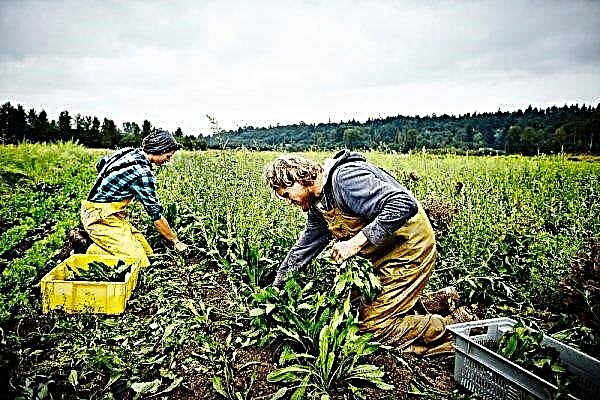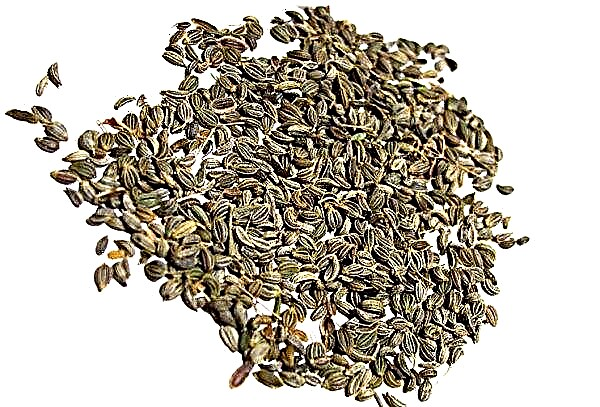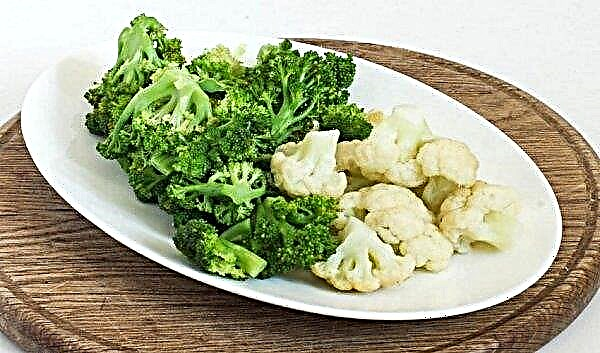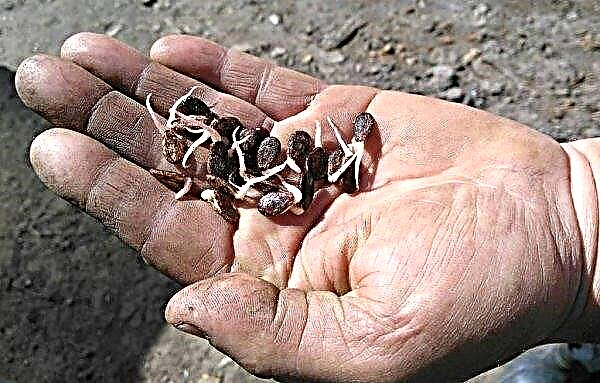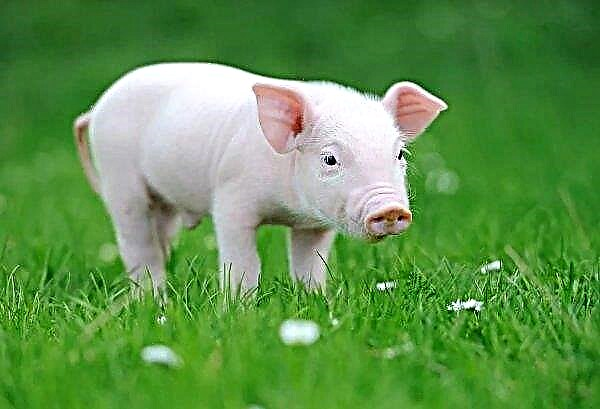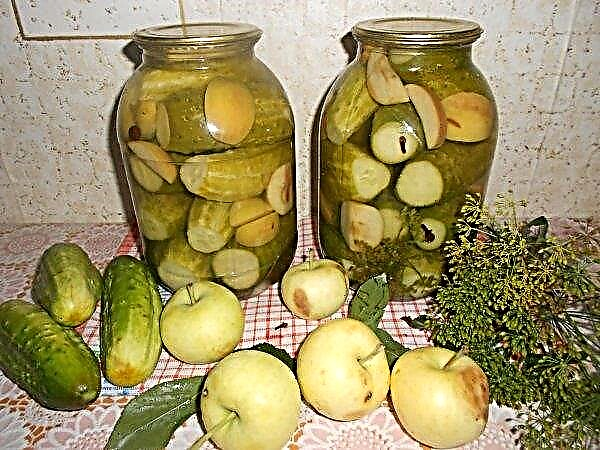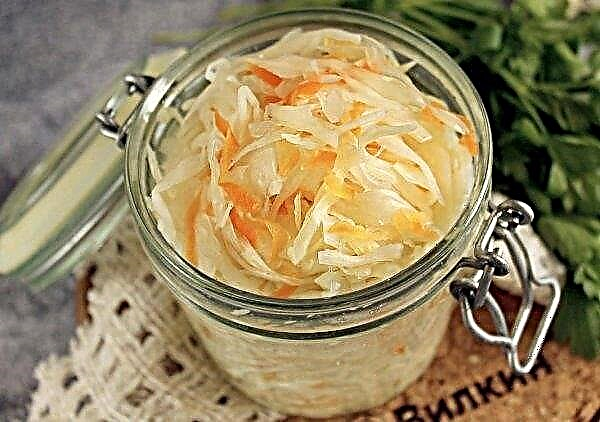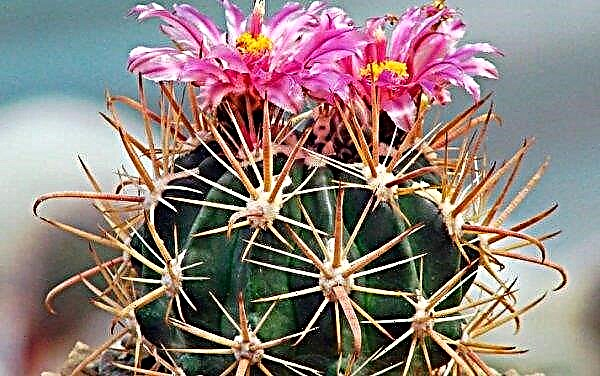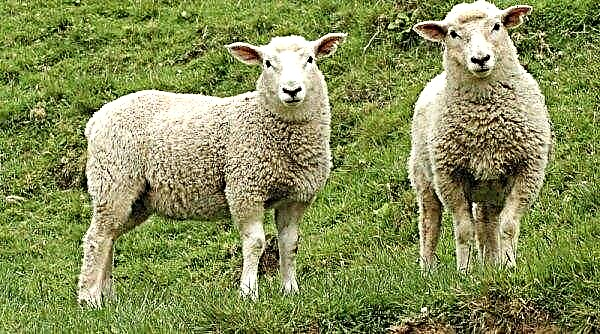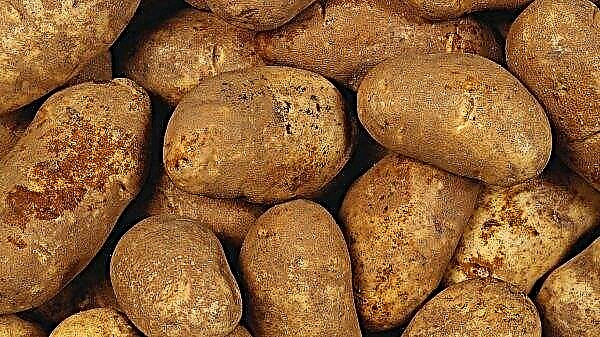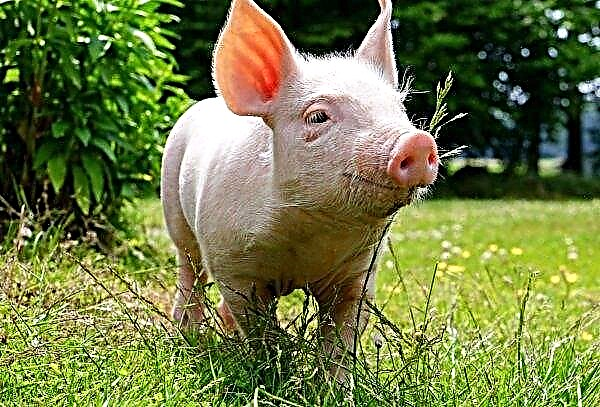Inexpensive, but highly effective sideration is a method of complete enrichment of the soil after harvesting. Choosing the right siderat is possible only after a thorough study of the characteristics of plants, their compatibility with different cultures, and the tasks that they are able to solve. Consider these issues in more detail.
Types of Siderata
Siderata - fast-growing plants with branched, fibrous roots, lush greenery. Their main purpose is to fertilize the soil, improve the quality of the composition, fight against weeds, pests. They need to be planted in early spring, immediately after snow melting or in autumn, when the entire crop is harvested.
- Siderative cultures perform a number of important functions:
- inhibition of weed growth and development;
- normalization of soil acidity;
- creating favorable conditions for the propagation of earthworm, beneficial bacteria;
- help in the destruction of pests, for example, phacelia inhibits the reproduction of nematodes in the ground;
- protection of seedlings from freezing during the landing of siderats by the rocker method;
- soil transformation into an airy, friable substrate.
Did you know? Over 400 plants can become green fertilizers. But gardeners and summer residents use only a small part of them.
Consider the most common.
| Kind | Destination | The culture |
| Legumes | Enrichment of soil with nitrogen | Vika, chickpeas, rape, annual lupine, peas, beans, beans, lentils |
| Cereal | Weed control | Sudanese grass, oats, barley, rye, chumiza, fescue, field grass, wheat |
| Borax | Universal green manure, planted regardless of previous and subsequent plants on the site | Phacelia |
| Cruciferous | Resistance to weeds, pests, diseases | Gray and white mustard, oil radish, winter raspberry rape, rapeseed |
When choosing siderata, consider their compatibility with cultivated vegetables, soil, optimal planting time, and features of the plant itself. So, when cutting phacelia ceases to grow, it can be used as a mulch without the need to remove the root system. If we talk about mustard, then it builds up new shoots from the roots, therefore, during the spring planting, it is necessary to dig up the site.
For open ground
In open soil as siderates sown:
- Pancake radish;
- white clover;
- phacelia;
- rape.
Phacelia - An excellent honey plant that attracts insects responsible for pollination of crops. The plant is characterized by rapid growth; it requires several mowings per season. The culture is not at all afraid of frost, therefore, seed planting is carried out in early spring. Grown greens obscure the seedlings of vegetables, acts as a dense "litter", preserving moisture in the area.
Rape responsible for improving the structure, soil quality. The microelements that make up are comparable to humus. Young greenery protects against wind currents, hot sun rays of the landing. Sowing the seed is early spring or autumn, between rows of beds.
Radish perfectly removes nitrates from the earth, stabilizes the pH level in the soil, additionally acts as a protector against parasites, thanks to the produced ether oils. It is sown in the soil in summer or autumn. Grown stems are used as mulch, compost for the formation of beds next season.
White clover, thanks to the strongly growing and branching roots, it perfectly loosens the earth, improves aeration, does not allow the development of putrefactive and stagnant processes. It is sown in the spring. Juicy stems - great compost and mulch.
Green crops intended for open ground are characterized by:
- plentiful, fast shoot;
- resistance to keel;
- cold resistance.
Plants prevent the loss of trace elements in the soil, quickly change the structure and condition of the upper soil layer, making it permeable.
Consider the most common "green" fertilizer.
| Cultivars | Achieved effect |
| Legumes | Enrichment of the earth with nitrogen |
| Cruciferous cereals | Prevent mineralization, leaching, bind nitrogen in the ground |
| Mustard, phacelia for late sowing Fodder beans, lupine, radish, sunflower, one-year ryegrass, spring rape when sown until August | Depress weeds, protect soil from erosion |
| Winter rape, colza | Form a lot of organics if sown in the fall |
| Mustard, bean family | Binding insoluble phosphates |
| Oil radish and rapeseed | Delay mineral elements, preventing their leaching |
| Broad beans, lupine, mustard, radish | Lower layers of soil are loosened by roots |
| One-year ryegrass, sunflower, phacelia | Suppress the reproduction of the nematode parasite |
Greenhouse siderates
Monocultures growing in greenhouse conditions deplete the soil. There are several ways out of this situation:
- periodic replacement of the fertile upper soil layer;
- continuous application of organic and chemical fertilizers;
- green crop rotation.
The last point is worth dwelling in more detail. By deciding to sow green manure, you prevent the destruction of the soil, while improving its condition.
Did you know? Lupine roots are covered by formations in which nitrogen-fixing bacteria are located. Only 1 hectare of this plant is able to accumulate about 200 kg of nitrogen in the soil.
Legumes are considered to be in demand for greenhouse planting. This is due to their symbiotic relationship with beneficial nitrogen-fixing bacteria. Plants saturate the soil with nitrogen coming from the air, while emitting nitrates into the environment. But to obtain a comprehensive enrichment and protection of the soil, three plant families are applicable:
The main characteristics of greenhouses for greenhouses:
| Culture, growth period, days | The resulting biomass, kg / ha | Useful substances, kg / ha |
| Lupine, 80 | 606 | 5,03 |
| Radish, 50 | 485 | 3,99 |
| Vika, 90 | 311 | 4,34 |
| Sorestka, 55 | 444 | 4,32 |
Choosing a mixture of several cultures, you can get the best result.
Selection of siderata for the future greenhouse culture
In order for the plants to give a good crop in the greenhouse and receive the maximum of necessary trace elements from the soil, without attracting chemical fertilizers, it is important to follow a certain order.
Vegetable growers with experience are advised to adhere to such a scheme:
- After ripening and picking radishes, carrots, cabbage, parsley, to renew the soil, sow ridges with winter rape or clover.
- In the next season, sow legumes on this square.
- Immediately at the end of the legume collection, prepare the soil for phacelia, buckwheat, oats or sunflower.
- For the fourth season, potatoes and tomatoes will give an excellent harvest.
- Next, plant a greenhouse alfalfa, clover.
- After it is worth planning the cultivation of cucumbers and zucchini.
- To improve the soil after pumpkin, mustard and radish are suitable.
Important! Cruciferous crops cannot be used as precursors for existing types of cabbage. And after and before the legumes, refuse to plant alfalfa, spring vetch, pink clover, white clover.
Consider green plants for specific plants. Cucumbers are compatible with radish, white mustard. These siderates disinfect the soil, returning the useful trace elements that the vegetable used during its growth. It is good to sow legumes and cereals. But the super-mixture after cucumbers, by right, is considered oatmeal. This combination will allow:
- saturate the soil with nitrogen, phosphorus, potassium;
- to loosen the top layer due to developed roots;
- rid of nematodes.

Eggplant, tomatoes, peppers drains the earth. To restore the soil, it is worth sowing winter cereals in the fall. It is good if November and December are snowy. Sprinkled with snow in the greenhouse space, they gain protection from the cold and complete hydration. Cereals provide tomatoes with potassium, which is responsible for a strong stem, juiciness and sugar content of fruits.
The “green doctor” who rid the earth of wireworms after cultivating tomatoes is phacelia. Additionally, it saturates the soil with nitrogen, potassium, reduces acidity, and well loosens.
Agriculture of green manure in greenhouses
In order for auxiliary plants to fully reveal their positive aspects, certain rules must be observed when planting them. Sowing time in a greenhouse greenhouse:
- Spring. Extremely cold-resistant crops are used, characterized by rapid growth and a set of green mass. These include: rye, mustard, melilot, fatseliya, oats, radish.
- Fall. At this time of the year, sprouting speed and an increase in green mass are important. It is better to sow oats, rapeseed, vetch, fatseliya, rye.


Regarding the placement of green manure on a plot or in a greenhouse, 3 methods are applicable:
- Independent - planting of the main culture is carried out in 1-2 weeks after the incorporation of siderates.
- Rocker - there is a simultaneous cultivation of the main culture, while the fertilizer is located in the aisle.
- Condensed - green seeds are immediately sown in a continuous layer, seedlings are planted in the aisle. The green mass of the fertilizer is trimmed when it reaches 5-7 cm and is left in the holes of the mulch.
When using the independent method, the planting of the main culture must be done no earlier than in 2-3 weeks. This is due to the period of siderat decay in the soil.
Did you know? Rapeseed and vetch are plants that can withstand temperatures up to -5 ... -8 ° C. At the same time, they are universal, as they give an excellent harvest when planting in the summer (July, June).
Sowing
During spring planting in a greenhouse, the soil must first be saturated with a sufficient amount of moisture. To do this, you can use snow, filling it with all the greenhouse space. If there is not enough rainfall, you can use watering. After moistening, the soil is randomly covered with seeds slightly pressed into the ground.
If seedlings are planted in rows, for sowing siderats it is necessary:
- Loosen 5-7 cm of the top layer;

- Make grooves;

- Sow sidereal cultures;

- Sprinkle with earth;

- Pour water at room temperature (+ 15 ... + 25 ° C).

Shoots of plants for sideration appear on 3-7 days. Until the time of mowing, these crops require the maintenance of optimal moisture indicators - this will accelerate seedlings and the growth of green mass. To prevent a sideratic plant from becoming a source of weed seeds, the cut should be carried out when reaching 15-30 cm in height (before the buds are formed). Seeding in the upper layers of the soil is carried out using a chopper or a Fokin plane cutter. To ensure fast and complete rotting, it is important to systematically water the beds.
Somewhat different rules for autumn sowing of green manure. For a greenhouse, this method is especially relevant if the territory is not used in winter. Greenhouse rows are sown by the method of scattering of seeds after collecting the entire crop of vegetables. Planting depth - 1-3 cm with further planting of seed in the top layer and systematic watering. Under favorable weather conditions - warm long autumn and long absence of frosts - the siderat root system will have time to form properly, the green mass will increase.
If all sowing dates are missed, it is better to give preference to frost-resistant crops. It:
- Vika;
- rye;
- rape;
- oats.
Do not pick mustard, radish. These cultures do not have time to reach the desired state.
- Using autumn sowing, gardeners get a lot of advantages:
- prolonged exposure to siderate on the main plant;
- soil loosening by a developed and strong root system;
- processing green mass into humus.
In spring, this mass becomes a great mulch, which makes it possible to carry out earlier planting of seedlings and seeds of the main crops.
Important! After cutting, oats and rye must not be buried. Their greens should rot on the surface, playing the role of mulch.
Digging
The opinions of gardeners regarding the appropriateness of digging up the soil after growing sideratic plants differ. According to some experts, so that green fertilizer can improve the soil, the correct plowing of the sown area is important.
- Plowed siderata:
- prevent compaction of the upper arable layer;
- increase soil moisture capacity.

In combination, this allows you to activate microbiological processes. Digging or smelling siderats is important 1-2 weeks before the main crop is planted. But their cut is carried out before the period of budding.
According to another group of experts who apply the green manure method in practice, digging or deep plowing kills microorganisms and violates the general structure of the upper layer of nutrient soil. They recommend cutting the green mass with a plane cutter. The maximum depth of the blade is 5 cm. Green shoots are spread over the bed and mulched to prevent drying.
- This approach allows you to simultaneously obtain dual benefits:
- The shoots, covered with a layer of mulch, gradually rot, becoming compost. This process contributes to the release of nitrogen.
- Roots located in the ground, which are affected by earthworms and microorganisms, decompose, forming humus.
Important! Especially not recommended for plowing winter crops. This leads to the loss of about 80% of beneficial sidereal effects.
Saturation of the soil with useful organic fertilizers is an important step towards obtaining a good crop. Green plants are the “green helpers” of gardeners. But the success of sideration completely depends on the fulfillment of all the above rules, the selection of plants, planting, cultivation and mowing.






